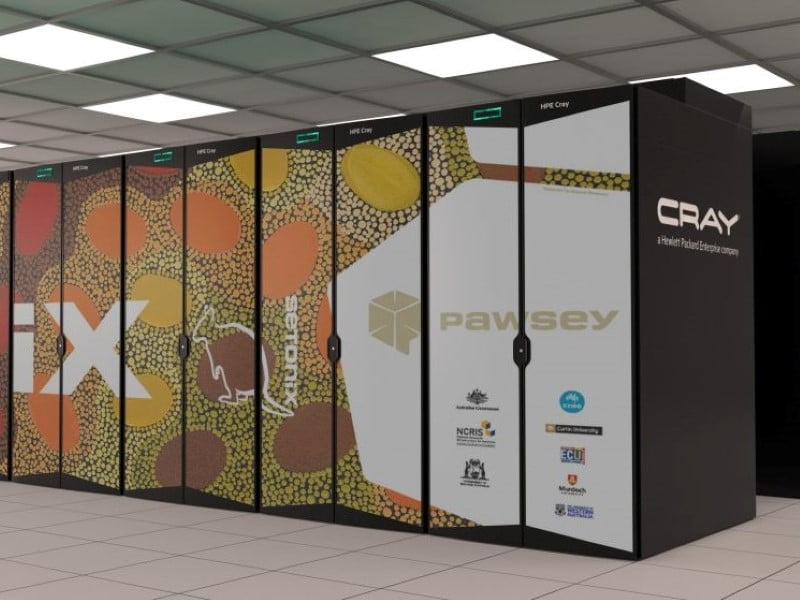The Pawsey Supercomputing Centre in Western Australia has unveiled the first stage of a $48 million public research supercomputer billed as the fastest in the Southern Hemisphere.
Early adopter researchers will now run code to ‘fine tune’ the supercomputer ahead of full operations next year, when the new system is expected to be up to 30 times more powerful than the Pawsey Centre’s other two supercomputers combined.

On Tuesday the purpose-built supercomputing centre in Perth unveiled stage one of its HPE Cray EX supercomputer.
Named Setonix after the scientific name for the quokka, a marsupial native to WA, the supercomputer’s cabinets are covered in Indigenous art produced by Wajarri Yamatji visual artist Margaret Whitehurst. The artwork is inspired by the stars that shine over Wajarri country in Western Australia’s Mid-West.
With a fully operational potential peak of 50 petaFLOPS of compute power, Setonix would be the fastest research supercomputer by far in Australia and across the Southern Hemisphere.
“This new system will accelerate discovery and enable more universities, scientific institutions and researchers — as well as our partners in industry and business — to access next-generation computing speed and data analysis,” Pawsey Centre executive director Mark Stickells said.
“Setonix marks a step change in Pawsey’s supercomputing firepower, and this additional capacity will allow more researchers and industries to access next-generation computing speed and data analysis.”
The Pawsey Supercomputing Centre is an joint venture between CSIRO, Curtin University, Edith Cowan University, Murdoch University and The University of Western Australia, with support from the state and federal governments.
The 1000m² facility is located in Kensington, Western Australia and includes solar power and a unique groundwater cooling system to removing heat from the supercomputers. Its supercomputers are used by researchers in areas like quantum technologies, data, cloud services and visualisation.
The newest supercomputer will include an eight-cabinet HPE Cray EX system built on the same architecture used in other leading exascale supercomputer projects.
One of Setonix’ first applications will be processing the data from the massive Square Kilometre Array radio telescope in Western Australia’s Murchison region.
“Setonix will process vast amounts of radio telescope data from SKA-related projects, and many other projects of national and international significance that we are proud to support,” Mr Stickells said.
The current stage one will see early adopter researchers run code to “fine tune Setonix” before it becomes available to 2022 allocations early in the year. Stage two is planned for mid-2022, with Setonix expected to be fully operational by the end of next year.
Setonix will eventually include more than 200,000 AMD compute cores across 1600 nodes, over 750 next-generation AMD GPUs, and more than 548 TB of CPU and GPU RAM, connected by HPE’s Slingshot interconnect, according to the Pawsey Centre.
Do you know more? Contact James Riley via Email.

